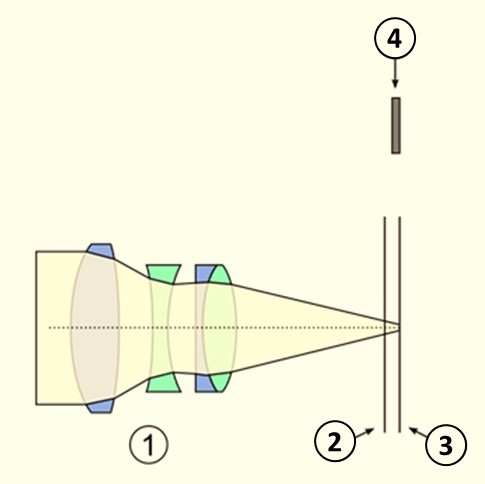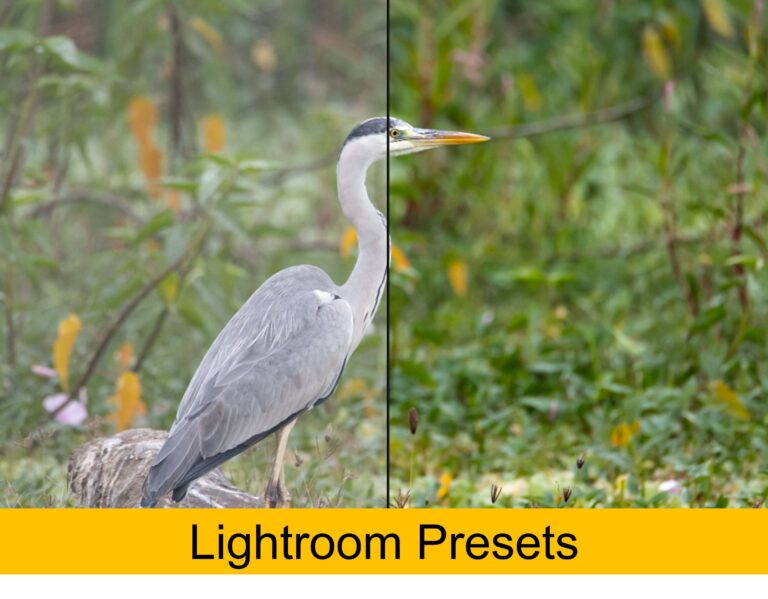While a DSLR camera uses a mirror mechanism to either reflect light into an optical viewfinder, or pass it through directly to the camera sensor, a mirrorless camera completely lacks such mirror mechanism (hence the name), which means that the light passing through the lens always ends up on the imaging sensor.
Mirrorless cameras rely on electronic viewfinders and LCDs to project what the imaging sensor sees. Light is not reflected onto an optical viewfinder (OVF). Mirrorless cameras are lighter, more compact, and easier to use than DSLR cameras.
The rise of compact system cameras has seen mirrorless digital cameras become a part of the growing trend. Major camera brands like Olympus and Sony have now launched their own line of mirrorless cameras.

What is a mirrorless digital camera ?

Parts of Mirrorless camera
- Lens group
- Shutter
- Image sensor
- Electronic view finder
A DLSR is more complex than a mirrorless camera. Aside from the complex mirror mechanism, there is a focusing screen, a condenser lens, pentaprism / pentamirror and other components present on a DSLR. All these are replaced by a electronic viewfinder in case of a mirrorless camera.
How Mirrorless Cameras Work ?
A mirrorless camera, on the other hand, is simpler mechanically. Light passes through the lens group (1) directly onto an image sensor (3). The optical viewfinder is replaced by an electronic viewfinder (5), which replicates the image sensor. The mechanical shutter (2) of a mirrorless camera is always open.
It is usually only used at the end or the beginning of exposure. The flange distance, which is the distance between the lens mount and the image sensor of mirrorless cameras, can be reduced significantly due to the absence of pentaprism and mirror.
A mirrorless camera does not have an optical viewfinder. The imaging sensor is always exposed to light. This gives you a digital preview of your image either on the rear LCD screen or an electronic viewfinder (EVF).
What is mirrorless camera mean ?
A mirrorless camera basically means what the name suggest. A camera without the mirror of a typical DSLR camera. The lack of mirror means the light always exposes the sensor and the EVF shows the user what sensor is seeing.
What is a mirrorless camera good for ?
Mirrorless cameras have many advantages over DSLR cameras. Aside from the potentially lighter weight and bulk of the camera itself, the use of an electronic viewfinder can bring many benefits to photographers.
Since everything is duplicated directly from the image sensor, camera settings such as white balance, saturation and contrast can be seen through the viewfinder directly and additional information overlays including live histograms can be placed within the viewfinder, allowing photographers to see exactly what they are about to take a picture of.
When combined with fast contrast-detection or on-sensor phase detection system, one can take advantage of being able to zoom in on a subject to verify focus, use focus peaking, face detection and other powerful features to ensure that focus is achieved precisely with every shot.
When shooting in daylight conditions, one can utilize the electronic viewfinder to review images, instead of relying on the back LCD of the camera.
However, mirrorless cameras also have some disadvantages. The first is that the electronic viewfinder cannot be activated unless the camera is turned on. This can severely impact the battery life. The second issue is that electronic viewfinders can be difficult to adjust to due to noticeable lags, blackouts, and high contrast.
The latest mirrorless cameras are fast and precise in autofocus but they don’t do as well in fast action shooting, especially when it is low-light.
How do mirrorless cameras focus?
Mirrorless cameras use an integrated autofocus sensor. DSLRs usually have one, but mirrorless cameras can let the imaging sensor do it. Modern mirrorless cameras have autofocus pixels built in.
An earlier generation of imaging sensors used a contrast-based focus, which is less accurate and snappier in real life situations. Many mirrorless cameras now have phase detection pixels built in. This allows them to focus faster and track subjects better. This is one of the greatest advantages that mirrorless cameras offer over DSLRs.
Which are the top mirrorless cameras?
Sony mirrorless cameras
The Sony A1 is currently the best mirrorless camera in the world. The Sony A1 captures 50-megapixel images at super-high burst rates with an excellent AF system, all for $6,500. Both Nikon and Canon are developing high-end mirrorless cameras that can compete with the Sony A1’s specs. These will be available before the Olympics begin.
Canon mirrorless cameras
The Canon EOS R5 is cheaper than the Sony A1 at $3,899 and offers 45-megapixel images with almost-as-fast burst rates. While you shouldn’t be wooed by its promises of 8K video, the Canon EOS R5 is one of the best all-around cameras ever made. The Sony A7 Mark IV has a higher-resolution 61-megapixel sensor.
Nikon mirrorless cameras
Peruse the Nikon mirrorless lineup and you’ll find the Z7 II at the top of the heap. It has a 45-megapixel sensor and a powerful image processor. The price is $3,000. The 24.5-megapixel Z6 II offers smaller file sizes and a more affordable starting price of $2,000. Nikon’s Z5 is still available for just $1,000. It packs a full-frame sensor inside a compact body.
Fujifilm mirrorless cameras
Fujifilm offers two excellent lines for mirrorless cameras, each with a different size sensor. The GFX medium format cameras command high prices, but they offer medium-format sensors, which are even larger than the full-frame chips typically found in pro cameras. This results in excellent image quality and depth-of-field effects that smaller cameras cannot offer.
Fujifilm’s smaller sensor APS-C series, the X-series, is Fujifilm’s compact camera line. It features rugged cameras with attractive designs that appeal to professionals. The X-Pro3 is a rangefinder-style camera, while the X-T4 costs $1,700 and has a more traditional design. The X-series also offers some excellent entry-level models like the X-E3, which provides an impressive set of features for a $700 camera.
How do Mirrorless Cameras Compare to DSLRs?
While mirrorless cameras are now offered by many manufacturers, they still have some differences from digital single-lens reflex camera models.
- Mirrorless cameras are lighter than traditional cameras. A compact mirrorless camera is lighter and more suited for moving. Digital SLR cameras can be heavier and more cumbersome, making it difficult to carry around for long periods of time. While the extra parts and attachments to a DSLR can improve the quality of your photos it can also be cumbersome to bring them around, especially when you are traveling.
- Mirrorless cameras offer greater image stabilization. Mirrorless cameras are more stable than mirror-equipped models, with less blurred images and less shaking. There are also fewer moving parts inside the camera, making them quieter and more discreet. The sensor size of mirrorless cameras is smaller than DSLRs. They are less suitable for low-light situations.
- Mirrorless cameras provide real-time previews for exposure and contrast. Mirrorless cameras allow you to preview your exposure and contrast settings before you take your photographs. The optical viewfinder on DSLRs allows the photographer to see right through the lens of the camera in real-time. This also means that DSLR users must take photos and examine them to ensure the exposure is correct.
- Mirrorless cameras have shorter battery lives. A mirrorless digital camera requires batteries to operate, unlike a DSLR’s optical viewfinder. This makes them less suitable for long shoot days.
- Mirrorless cameras are more expensive. While DSLR cameras are as expensive as mirrorless cameras, DSLR cameras offer more value for money for entry level photographers. Mirrorless cameras tend to be always targeted towards higher end photographers and are generally more expensive.
- Mirrorless cameras come with fewer accessories. Although mirrorless cameras are still in development in accessories, they still lack a wide range of lens mounts and attachments. However, DSLRs are more versatile than mirrorless cameras because there are many interchangeable lenses.
- Mirrorless cameras are faster. Both mirrorless and DSLR cameras can capture photos at high shutter speeds. However, mirrorless cameras have simpler internal mechanics that allow them to shoot faster than DSLRs. This is especially true when continuous shooting or bursts of images are required.
- Mirrorless cameras feature a less precise autofocus system. A mirrorless camera’s autofocus system uses contrast-detection instead of phase detection. This means that the camera can’t measure distance between subject and lens as accurately as a DSLR. The mirrorless camera will adjust its focus to compensate for lack of light. This is similar to what happens to smartphones when they struggle to focus, blurring the image.
Conclusion
While mirrorless cameras may not be better than DSLRs, they do have some advantages (such as video) and drawbacks (such as battery life). It all comes down to which type of camera you need, for professional or family travel.
For casual photographers who don’t mind a shorter battery life or want to take a compact camera with them, mirrorless cameras are a great choice. It’s a tough decision for more experienced users. However, you need to clearly define your requirements before making a purchase.







